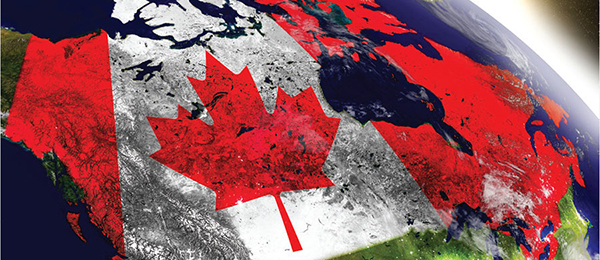New Drone Rules in Canada

Written by Tyler Dobbs AMA In Action Advocating For Members As seen in the April 2019 issue of Model Aviation.
Canada’S civil aviation authority, Transport Canada, recently published new regulations for unmanned aircraft systems. UAS are typically referred to as remotely piloted aircraft systems (RPAS), or drones.
The new regulations go into effect June 1, 2019, and require operators to pass a mandatory knowledge exam and a practical flight review in order to obtain a permit. RPAS operations are divided into Basic or Advanced operations and place restrictions on aircraft weight, airspace, and operator age.
In a conversation with AMA, Model Aeronautics Association of Canada (MAAC) President Peter Schaffer stated that MAAC members are exempt from these new regulations. His full statement follows:
"To all MAAC Members, Re: Transport Canada Gazette II news release of January 10, 2019
"We would like to advise you that the anticipated new regulations for Remotely Piloted Aircraft Systems have now been published. However, it should be clearly understood that nothing has changed for MAAC members and even though the regulations have now been published, they do not take effect until 1st June 2019. Until that date the Interim Order Respecting the use of Model Aircraft remains in effect, and as this order does not apply to MAAC operations, MAAC members can continue to operate as we always have.
"Once the new regulations do come into effect, they will apply to all aircraft without a pilot onboard, whether for recreational or non-recreational purposes. However, be assured that MAAC continues to work with Transport Canada to ensure your current privileges are protected. As we advised you in the last email update, MAAC is working with Transport Canada on an exemption from the new regulations. With this exemption, once the new regulations do come into effect, MAAC members will enjoy the same freedoms they always have. It is expected that the MAAC exemption will be approved well before the new regulations come into effect on 1st June 2019.
MAAC leadership continues to work for its members and to ensure that we can all enjoy our passion of operating model aircraft. We will provide additional updates, once we have secured the exemption. Until then, please let me repeat that nothing has changed for MAAC members and you can continue to operate as you always have.
"On behalf of the MAAC transport Canada Advisory Group Peter Schaffer President, MAAC"
AMA members who frequently visit Canada, and our Canadian affiliate members, should continue to monitor MAAC’s website and social media for the latest information. If you have any questions or concerns, please contact your AMA government affairs team at [email protected].

AMA Response to FAA Proposed Rulemaking
Earlier this year, the FAA published a notice of proposed rulemaking on the Operation of Small Unmanned Aircraft Systems Over People and an advance notice of proposed rulemaking on Safe and Secure Operations of Small Unmanned Aircraft Systems. AMA’s executive director, Chad Budreau, issued the following statement:
"The proposed rulemakings on flying over people, night flying, and safe and secure operations are a step toward opening up the airspace for more commercial UAS operators. For model aircraft hobbyists, however, we do not anticipate these rules will have a significant impact on our existing guidelines for safe and responsible operation.
"Model aircraft flights over people are currently not allowed under AMA’s community-based safety guidelines. We believe this is a sound and proven safety guideline for all recreational UAS operators. At the same time, we understand that some commercial applications present the need for UAS to fly over people for effective and efficient operations. We believe these operations should be allowed, provided they can be done safely, and any potential risk to people on the ground is appropriately mitigated.
"In addition, AMA’s safety guidelines allow night flying as long as a lighting system that provides the pilot with a clear view of the model’s attitude and orientation at all times is in place. We believe this policy continues to make sense and, at first glance, is similar to what the FAA is proposing.
"AMA’s safety guidelines also address several of the questions raised in the Advance Notice of Proposed Rulemaking for Safe and Secure Operations of Small UAS. For example, according to the safety guidelines, model aircraft are not allowed to be operated closer than 25 feet away from an individual except for the operator, with few exceptions. AMA also has varying guidelines for model aircraft with different capabilities.
"Lastly, and perhaps most importantly, AMA recognizes that one of the FAA’s top priorities is to put remote identification rules in place to better facilitate the integration of UAS into the nation’s airspace and address security concerns. We continue to ask for FAA collaboration in adopting remote identification requirements that reflect the operational use of UAS—model aircraft, under AMA’s safety programming, pose no new risk to the airspace, therefore the remote identification rules for model aircraft operations should be more flexible."
In 2016, AMA President Rich Hanson participated in FAA’s Micro UAS Aviation Rulemaking Committee, which made recommendations on the regulatory framework for small UAS flights over people. At that time, he expressed concerns about allowing recreational UAS flights over people primarily because of safety. Additionally, we were concerned that the public would be sensitive to drones flying over their heads—concerns that are still valid.
Thank you for your support of model aviation! Please monitor AMA’s social media accounts or www.modelaircraft.org/amagov for the latest information. If you have any questions or concerns, please contact us at [email protected].










Add new comment